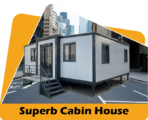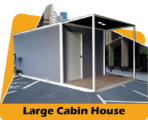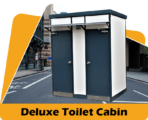What architectural styles are most popular for cabin houses in Malaysia?

- Container homes – Cutting large openings in shipping containers creates well-lit and breezy interiors. Strategic placement allows cross-ventilation.
- Courtyard cabins – Central open-air courtyards bring light and airflow inside. Surrounding rooms can have large windows overlooking the courtyard.
- A-frame designs – The steeply sloped roof and triangular end walls allow placing extensive windows for lighting and ventilation.
- Solar passive design – Techniques like window placement, insulation, thermal mass, and solar orientation reduce heat gain naturally.
Choosing open, minimalist styles that take advantage of natural light, airflow and passive cooling principles is the best way to create bright, breezy cabin houses in Malaysia’s tropical climate.
How important is it to choose an architectural style that fits the surrounding landscape for cabin houses in Malaysia?
Choosing an architectural style that complements the surrounding landscape is extremely important for cabin houses in Malaysia for several reasons:
- It helps the cabin blend in seamlessly rather than look out of place and artificial. The right style creates visual harmony.
- Styles suited to the location are often better optimized for the climate and setting. For example, tropical style in the lowlands or alpine style in the highlands.
- Using local, natural materials adds to the integration with nature. For instance, timber and stone in a forested area.
- Incorporating the natural terrain like slopes, rocks, existing vegetation into the design instead of changing the landscape aids integration.
- Styles that obstruct views or access to nature defeat the purpose of a cabin retreat immersed in the landscape.
- Adhering to location-based architectural traditions also often ties into culture and heritage.
- A complementary style can make small cabins seem unobtrusive and large cabins visually grounded rather than ostentatious.
- A harmonious style adds to the calm, peaceful atmosphere people expect from a cabin retreat.
In essence, location-appropriate architecture allows the cabin house to be an extension of the landscape and creates a synergistic, nature-oriented experience. This makes choosing the right style for the site crucial.
What are the most popular architectural styles for cabin houses in Malaysia?
Some of the most popular architectural styles for cabin houses in Malaysia include:
- Traditional Malay – Features include ornate wood carvings, attap roofing, raised floors, large overhanging eaves, and open-air spaces. Reflects indigenous heritage.
- Tropical – Designed for hot, humid climate with cross-ventilation, breezeways, large windows, high ceilings, and minimal walls. Indoor-outdoor living.
- Vernacular Kampung – Inspired by traditional Malay villages using natural materials like wood and bamboo. Pitched roofs, porches, on stilts.
- Minimalist Modern – Clean lines, neutral colors, utilitarian shapes and forms, extensive glass, emphasis on natural light and space.
- Coastal Cottage – Casual, breezy seaside charm using natural wood, raised floors, decks, large porches, high ceilings.
- Alpine – Steeply pitched roofs, attics, basements, timber and stone finishes give a rustic, cozy feel. Popular in highlands.
- Container – Trendy, eco-friendly style using repurposed shipping containers as ready-made modules. Industrial chic.
- A-Frame – Dramatic triangular A-frame structures made from wood or glass. Cozy interiors and unique geometric shape.
The choice depends on factors like climate, location, landscape, budget and personal preferences. Blending styles is also popular.
Key Takeaways
- Malaysia’s hot, humid climate makes tropical, indoor-outdoor and vernacular kampung styles well-suited for cabins.
- Location specifics like the coast, highlands or cities impact optimal architectural choices.
- Blending modern and traditional styles allows cultural connection alongside contemporary design.
- Small cabins suit compact styles like tiny homes, while large cabins can incorporate more elaborate designs.
- Simplicity and natural materials make styles like coastal cottage cost-effective.
- Maximizing natural light and cross-ventilation should be prioritized.
- Choosing a style that complements the landscape helps the cabin blend in.
- Personal preferences, budget, purpose and sustainability are also considerations for selecting a cabin’s architectural style.
Conclusion
In summary, architectural styles for cabin houses in Malaysia must be adapted to the tropical climate, blend local heritage with modern aesthetics, and integrate harmoniously into the diverse landscapes. A cabin’s architecture significantly impacts its functionality, comfort and visual appeal. Carefully weighing factors like site, size, budget, sustainability and personal inclinations allows finding the ideal style or fusion of styles for a memorable Malaysian cabin getaway.
Kontraktor Rumah Kabin
Rumah Kabin Murah
Rumah Kontena Vs Rumah Kabin
Rumah Kabin Pasang Siap
Senarai Harga Kabin di Malaysia
Heavy Duty Cabin
Light Duty Cabin












